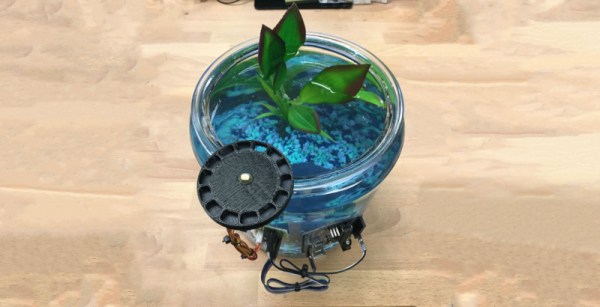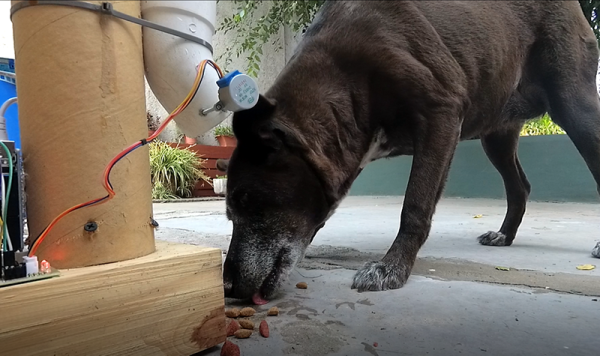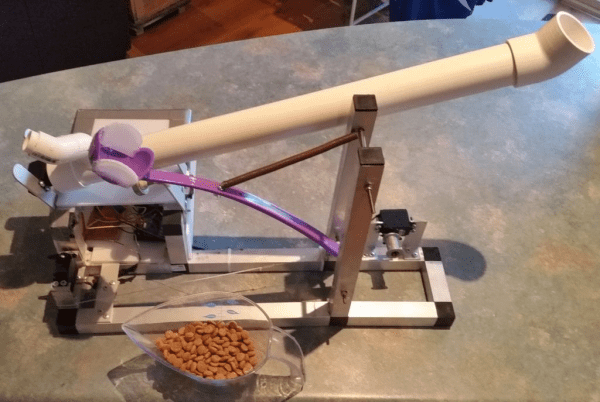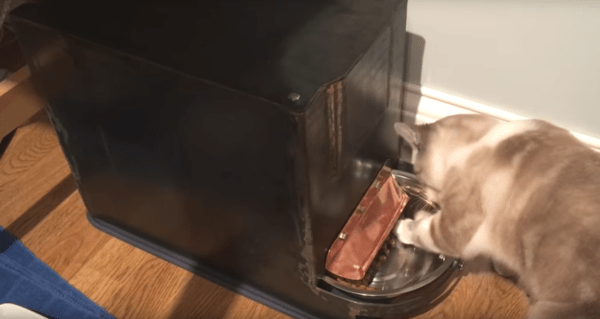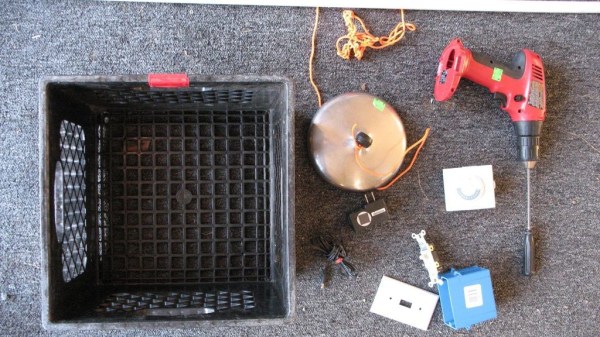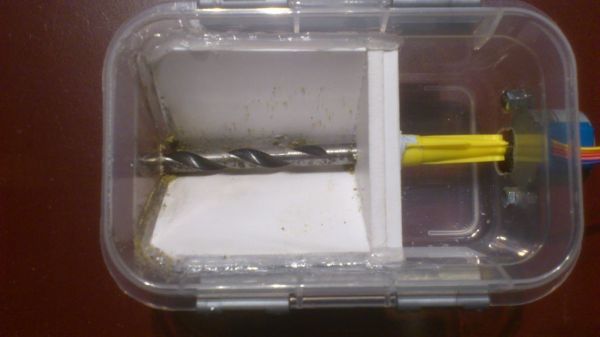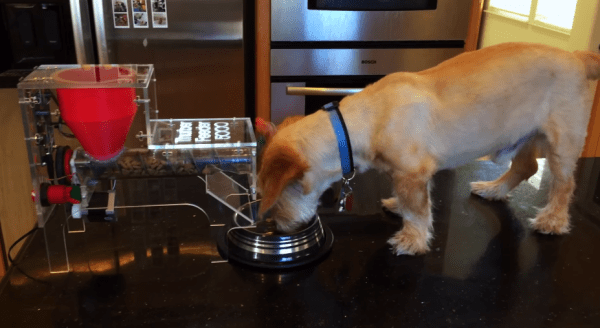Fish are easy to keep as pets, requiring little more than regular feeding to keep them happy in the short-to-medium term. If you’re going on holiday, it can be nice to know that your pets are being taken care of, but finding someone to take on the chore can be hard. [Trevor_DIY] doesn’t need to worry about that, however – he’s built an automatic feeder to handle the job.
The build uses an Arduino Uno as the brains, with the only additional hardware required being a stepper motor and driver. The stepper motor drives a 3D printed wheel, with 14 slots – each one holding one meal for the fish. This allows the feeder to deliver two meals a day for a full week before requiring attention.
The feeder is configured to feed a breakfast meal, then a dinner meal 8 hours later, and then wait 16 hours before breakfast comes around again. Rather than use a real-time clock, this is simply handled with the Arduino’s built in delay function. While it isn’t super accurate, this should be close enough over a week to keep the fish alive. We’d be interested as to just how far it drifts over time.
Overall, it’s a quick and tidy way to keep the pets going without a lot of fuss. Pet feeders are a popular project, as they solve a common problem faced by owners the world over; this one can even handle wet cat food. Video after the break.

